Caryn
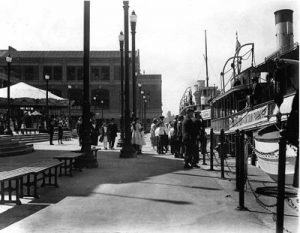 Any kind of explosive can lead to danger. There are some industries that use explosives in their daily activities, and for the most part, all is well and people are safe. Nevertheless, there are those few situations, which always seem like they are so common, when they make the news. In reality, they are probably very rare, although I can’t say that for sure. It just seems to me that if these explosions were common, we would find a different way of doing things.
Any kind of explosive can lead to danger. There are some industries that use explosives in their daily activities, and for the most part, all is well and people are safe. Nevertheless, there are those few situations, which always seem like they are so common, when they make the news. In reality, they are probably very rare, although I can’t say that for sure. It just seems to me that if these explosions were common, we would find a different way of doing things.
On the night of February 24, 1922, in McCook, Illinois, a powder magazine exploded in a stone quarry. The quarry at McCook was on the outskirts of Chicago. The the explosion occurred, it shook the entire city. I know that explosions can be felt for miles and miles, and can even show up on seismometers. Still, Chicago is a big city. It seems odd to think that such a big city could feel the effects of an explosion, but that was just the beginning.  Windows were shattered in the south and the west portions of the city shortly before 9:30pm. People began calling the emergency numbers and calling newspapers to find out where the explosion had occurred and how many people had been killed. It seemed that no one knew at first, but soon it became obvious. An inquiry by The Associated Press to Indianapolis soon brought a bulletin from LaFayette, Indiana, that the explosion had occurred at McCook, Illinois.
Windows were shattered in the south and the west portions of the city shortly before 9:30pm. People began calling the emergency numbers and calling newspapers to find out where the explosion had occurred and how many people had been killed. It seemed that no one knew at first, but soon it became obvious. An inquiry by The Associated Press to Indianapolis soon brought a bulletin from LaFayette, Indiana, that the explosion had occurred at McCook, Illinois.
With that information they were able to find out within a few minutes that there had been an accident at the quarry which is situated in a rather secluded spot. It was found that no one had been killed, but early reports had no explanation as to how it occurred. The first definite report of the blast reached a Monon railroad signal tower at Dyer, Indiana. It was then relayed to the Monon dispatcher at LaFayette, before it came back to  Chicago over The Associated Press wire.
Chicago over The Associated Press wire.
The McCook quarry has had a long history problems that have been the direct result of quarry blasting. The quarries need to blast for loosen up the stone, but the effects can be devastating, even causing train derailments at times. The public has at times complained about the damages, but there didn’t seem to be much that could be done about it. Pictures of cracked walls and broken windows have been brought in for emphasis. I guess that until someone comes u with a better way to get the rock out of the quarry, the city will be stuck with the problem for the foreseeable future.
 My grand niece, Christina Masterson is a dental hygienist by trade, who has been promoted to assistant office manager. As most of us know, 2020 was a tough year on many businesses, and dentists were among the hardest hit. I can’t tell you how many times my own cleanings have had to be rescheduled throughout the year. Of course, I am one person who had to be rescheduled, but for people in the field, like Christina, it was a complete shutdown for 6 to 8 weeks in March, due to Covid-19. Thankfully, Christina’s skills allowed her to pick up a few hours at an emergency dental clinic during those weeks. When the lockdown was ended, Christina wasn’t sure where things would stand for her. She was working at another office because her old office had closed, but she wasn’t really happy there. When her old office opened up again, they
My grand niece, Christina Masterson is a dental hygienist by trade, who has been promoted to assistant office manager. As most of us know, 2020 was a tough year on many businesses, and dentists were among the hardest hit. I can’t tell you how many times my own cleanings have had to be rescheduled throughout the year. Of course, I am one person who had to be rescheduled, but for people in the field, like Christina, it was a complete shutdown for 6 to 8 weeks in March, due to Covid-19. Thankfully, Christina’s skills allowed her to pick up a few hours at an emergency dental clinic during those weeks. When the lockdown was ended, Christina wasn’t sure where things would stand for her. She was working at another office because her old office had closed, but she wasn’t really happy there. When her old office opened up again, they  asked her to come back, and she was delighted. She had been praying for another job to open up for her, and her old office was her answer to prayer.
asked her to come back, and she was delighted. She had been praying for another job to open up for her, and her old office was her answer to prayer.
The pandemic left many people wondering if they would have a job to come back to. Christina’s strong faith in God helped her to get through these very tough times. Tough times don’t necessarily build faith, but if you have faith, you can get through the tough times. I would hate to face the tough times without God, and I’m sure Christina feels the same way. I think there were a lot of people who found themselves in a make or break time with their faith. Churches were closed, and depression set in with a lot of people. I am so thankful that Christina had already begun to cement her relationship with God before the pandemic hit. It gave her a  head-start on her faith in a time when she needed it most. Now that things are improving, she finds herself in a really good place.
head-start on her faith in a time when she needed it most. Now that things are improving, she finds herself in a really good place.
Now that things are opening up again, Christina has decided to focus on herself a little bit. The Covid lockdowns put a lot of people in an over-eating-under-exercising mode for a time. Many people found that as things opened up, their clothes didn’t fit like they used too. Now I don’t know if Christina put on any weight, but like many of us, she needed to get back to working out. So, Christina set herself to becoming the new and improved Christina. She joined a gym, started working out on a regular basis, and she started eating healthier and juicing. Christina has always stayed in pretty good shape, but I’m sure she is feeling so much better these days. Things in her life are lining up again, and 2021 is going to be a great year. Today is Christina’s 25th birthday. Happy birthday Christina!! Have a great day!! We love you!!

 Some birthdays are different beyond anything we could have ever imagined. That is the kind of birthday my brother-in-law, Ron Schulenberg is having this year. Never in a million years did he expect to be a widower at the age of 53, but that is exactly where he finds himself, and his 13 year old son, Tucker, who also lost his mom. While Ron’s current situation is devastating, I am very proud of how he is handling it and the sadness that comes and go with both Ron and Tucker. While this year started it in the worst possible way, I pray that the rest of the year will get better. I know that his wife, Rachel would want Ron and Tucker, as well as her other children, Cassie and Riley, to be happy in life…as hard as that seems right now.
Some birthdays are different beyond anything we could have ever imagined. That is the kind of birthday my brother-in-law, Ron Schulenberg is having this year. Never in a million years did he expect to be a widower at the age of 53, but that is exactly where he finds himself, and his 13 year old son, Tucker, who also lost his mom. While Ron’s current situation is devastating, I am very proud of how he is handling it and the sadness that comes and go with both Ron and Tucker. While this year started it in the worst possible way, I pray that the rest of the year will get better. I know that his wife, Rachel would want Ron and Tucker, as well as her other children, Cassie and Riley, to be happy in life…as hard as that seems right now.
With Rachel’s passing came other changes for Ron. He had always worked nights, but with a 13 year old at home, he needed to change that to days, so that is what he did. It is a big change for him. He preferred the night shift, but it was important for Tucker, and that is all that matters now. Another change is that Ron is now the “Chief cook and bottle washer,” so to speak. He can cook, but Rachel was a phenomenal cook…a hard act to follow. I believe that Ron with find his own rhythm and cooking style. Tucker likes most of what he cooks now, and they will find things together that they like. Who knows, maybe Tucker will find some good recipes too.
We are all so thankful that Tucker has his dad, who adopted him on June 27, 2019. Tucker is not alone now. He has his dad to help him get through such a sad time in his life. And Tucker is helping his dad too. They depend on each other now, and work together to get through this. When I think of the terrible loneliness that happens after such a loss, it tears at my heart that these guys are going through it I know that in time, there will be less 
 pain, but right now, it is so strong and we have no way to ease their pain. The future will be different than they every planned for it to be, but they will get through it and we as a family will help them to get through it. Today is the first birthday Ron has had without Rachel in ten years, and that will make it a hard day, but I pray that he knows how much Rachel loved him, and that she wants the best for him and her children. She is in Heaven now, but her memory will always live on in our spirits. I pray that Ron can find some measure of happiness today too. Today is Ron’s birthday. Happy birthday Ron!! Have a great day!! We love you!!
pain, but right now, it is so strong and we have no way to ease their pain. The future will be different than they every planned for it to be, but they will get through it and we as a family will help them to get through it. Today is the first birthday Ron has had without Rachel in ten years, and that will make it a hard day, but I pray that he knows how much Rachel loved him, and that she wants the best for him and her children. She is in Heaven now, but her memory will always live on in our spirits. I pray that Ron can find some measure of happiness today too. Today is Ron’s birthday. Happy birthday Ron!! Have a great day!! We love you!!

 With each passing year, I find myself more and more amazed that my mom, Collene Spencer could be in Heaven for six years now. For those of us who miss her very much, that thought feels sad, but for my mom, who loved the Lord so much and was excited to see Heaven, these have been wonderful years, that seemed like seconds, I’m sure. Each day for her is now spent in rejoicing, because that was always what my mom wanted. She never desired anything more than to worship God and bask in His presence. Like one of the songs we used at her funeral, and those of many others now, tells us, “We can only imagine what it will be like!!”
With each passing year, I find myself more and more amazed that my mom, Collene Spencer could be in Heaven for six years now. For those of us who miss her very much, that thought feels sad, but for my mom, who loved the Lord so much and was excited to see Heaven, these have been wonderful years, that seemed like seconds, I’m sure. Each day for her is now spent in rejoicing, because that was always what my mom wanted. She never desired anything more than to worship God and bask in His presence. Like one of the songs we used at her funeral, and those of many others now, tells us, “We can only imagine what it will be like!!”
Mom enjoyed many things in her lifetime. She liked to travel, go camping, celebrate the holidays, and spend time with family, but more than anything, my mom loved to spend time in the Word. We bought he a Kindle when they first came out, and loaded it with Christian books and the Bible. It made it so much easier for her to read, because it was so light and easy to hold. She had dozens of books at her disposal, and she loved that. She spent her days reading and communing with God while her family was all at work. Anyone who knew her will tell you that my mom was “All about bringing others to the Lord.” She loved people, and didn’t want anyone to be lost, but she really wanted people to know how much God loves them. She never stopped telling others about God’s love for them, and that is to her credit. I can’t begin to count the number of people she led to the Lord in her lifetime.
Of the things on this Earth, the most important to mom was her family. She treasured each and every new baby that was added to her lineage, and I know she can’t wait to meet the ones who have arrived after her homegoing. She also treasured the new spouses and partners. There was a special place in her heart for each of these new additions. When someone loves one of her children, grandchildren, great grandchildren, and beyond, that makes them awesome in Mom’s eyes…and that makes them as much hers as if she had given birth to them. There was always room in Mom’s heart for more loved ones. She loved watching her family grow with each new addition. She considered each one perfect. It s such a wonderful way to look at people, and one 
 we should all incorporate into our own lives. When I think of the life lessons my mom gave us, these things are among the greatest. As I look forward to my own homegoing someday, I can only imagine just how wonderful it will be, and as I continue my life on Earth, it is my desire to live my life in such a way as to make my mom and my dad proud of the child they raised, and the woman I have become. I miss my mom very much, and I am forever grateful for the life she and my dad gave me. Happy 6th anniversary of your homegoing, Mom. We love and miss you very much and can’t wait to see you again.
we should all incorporate into our own lives. When I think of the life lessons my mom gave us, these things are among the greatest. As I look forward to my own homegoing someday, I can only imagine just how wonderful it will be, and as I continue my life on Earth, it is my desire to live my life in such a way as to make my mom and my dad proud of the child they raised, and the woman I have become. I miss my mom very much, and I am forever grateful for the life she and my dad gave me. Happy 6th anniversary of your homegoing, Mom. We love and miss you very much and can’t wait to see you again.

 My sister-in-law, Debbie Cook is an expert craftswoman. In her lifetime, she has made many, various gifts and items to sell, that she handmade with love. Many a baby has a sampler with their name and date of birth on it in cross stitch that is cherished by the child and its parents. Many is the person who owns a quilt made by Debbie’s hands. She has also done sewing through the years, making clothes for her girls, Machelle and Susan. Debbie, along with her parents, Walt and Joann Schulenberg and her sister, Brenda Schulenberg, had booths in many craft fairs over the years, though in recent years craft fairs have somewhat dwindled…a sad thing really, because they provided awesome, and sometimes one-of-a-kind, gifts for many people to give to loved ones.
My sister-in-law, Debbie Cook is an expert craftswoman. In her lifetime, she has made many, various gifts and items to sell, that she handmade with love. Many a baby has a sampler with their name and date of birth on it in cross stitch that is cherished by the child and its parents. Many is the person who owns a quilt made by Debbie’s hands. She has also done sewing through the years, making clothes for her girls, Machelle and Susan. Debbie, along with her parents, Walt and Joann Schulenberg and her sister, Brenda Schulenberg, had booths in many craft fairs over the years, though in recent years craft fairs have somewhat dwindled…a sad thing really, because they provided awesome, and sometimes one-of-a-kind, gifts for many people to give to loved ones.
In the years since she quit participating in craft fairs, Debbie has enjoyed camping a lot. Since her husband, LJ  Cook retired, they have been able to go camping a lot more than they could before. In fact, they would probably live in the Big Horn Mountains all summer, if not year round. Of course, their girls, Machelle and Susan probably wouldn’t like that much, because they wouldn’t get to see them as often as they do now. Not that life doesn’t make it difficult, because everyone is busy, but if their parents lived in the mountains, it would be harder to go visit. For Debbie, living in the mountains wouldn’t hinder her hobbies much, because much of it can be done anywhere.
Cook retired, they have been able to go camping a lot more than they could before. In fact, they would probably live in the Big Horn Mountains all summer, if not year round. Of course, their girls, Machelle and Susan probably wouldn’t like that much, because they wouldn’t get to see them as often as they do now. Not that life doesn’t make it difficult, because everyone is busy, but if their parents lived in the mountains, it would be harder to go visit. For Debbie, living in the mountains wouldn’t hinder her hobbies much, because much of it can be done anywhere.
Debbie loves being a grandma, and enjoys spending time with grandsons, Weston and Easton Moore, and granddaughters, Jala Satterwhite and Kaytlyn Griffith. These days, since the kids are all getting grown up, they are a big help to her and LJ too. She used to spend more time with the kids, of course, because when they were in school they often came to her house after school, but now the older three are driving, so there is no need to pick them up or babysit them. It is always sad when the active grandparent days are behind us, then we must wait for the great grandchildren to begin to come. Of course, we still have our grandchildren, but we don’t have the babies, and I think that makes every grandparent a little bit sad.
As life goes on, Debbie and LJ are looking forward to many more years of camping in the Big Horns with their family. They all love to camp as a group, sitting around the campfire at night just enjoying the warmth and  !!
!!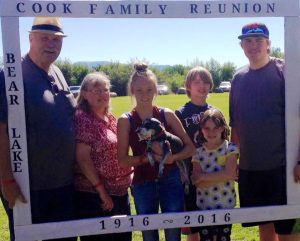 comradery, as well as the occasional moose that strolls through the camp. They used to go hunting, and liked getting the wild meat, but they haven’t really done that in a number of years. Now they hunt with their eyes, looking for the best specimens, but not shooting them. In that, they have had great success. Today is Debbie’s 68th birthday. Happy birthday Debbie!! Have a great day!! We love you!!
comradery, as well as the occasional moose that strolls through the camp. They used to go hunting, and liked getting the wild meat, but they haven’t really done that in a number of years. Now they hunt with their eyes, looking for the best specimens, but not shooting them. In that, they have had great success. Today is Debbie’s 68th birthday. Happy birthday Debbie!! Have a great day!! We love you!!
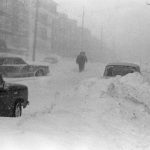
 As the United States is in the grip of a fierce snow storm, I am reminded of another snow storm that happened February 21 – 23, 1971. The storm is considered Oklahoma’s extreme storm. This blizzard buried northwestern Oklahoma under as much as three feet of snow, and that doesn’t include the drifting. The town of Buffalo was the hardest hit. They reported 23 inches of snow on the 21st alone, and a state-record snow depth of 36 inches by the morning of the 24th. The northern part of the state was just buried.
As the United States is in the grip of a fierce snow storm, I am reminded of another snow storm that happened February 21 – 23, 1971. The storm is considered Oklahoma’s extreme storm. This blizzard buried northwestern Oklahoma under as much as three feet of snow, and that doesn’t include the drifting. The town of Buffalo was the hardest hit. They reported 23 inches of snow on the 21st alone, and a state-record snow depth of 36 inches by the morning of the 24th. The northern part of the state was just buried.
Oklahoma tends to be a mild weather state, with temperatures in December, January, and February averaging in the 50s. This week is the anniversary of the 1971 blizzard, which was likely the most intense winter storm ever to hit the Sooner State, although the current storm might rival it now. With the current storm, Oklahoma is seeing temperatures averaging -6°. The prior record was in 1909 at 7°. The power company had had to implement rolling blackouts to assure that the power grids don’t fail. I don’t think they have received the amount of snow with the current storm, but the severity is very similar, when you think about it. Anytime a storm is is bad enough to shut things down, especially the power, it is severe.
When the blizzard of 1971 finally ended, 36 inches of snow was measured in Buffalo, which was the state’s record for the highest snowfall total, but the snow drifts measured as high as 20 feet tall. While northwestern Oklahoma was hit very hard, just a short distance to the west in the Oklahoma Panhandle, only light snow fell with Boise City receiving only 3 inches and only 2 inches in Kenton. The 1971 storm put ranchers in a precarious position until C-124s from the Oklahoma Air National Guard dropped 150 tons of hay to stranded Oklahoma cattle. Local cattleman flew along with the aircraft to guide the aircrews to the stranded cattle. The massive loss numbers of 15,000 in livestock accounted for much of the $2 million in damages.
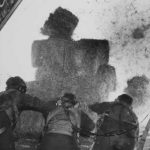
 The vicious storm became known as the 84-hour blizzard. It actually occurred across the eastern half of the Texas and Oklahoma Panhandles. The storm his the worst un Oklahoma, but in the region, 8 deaths were reported…7 in Pampa, 1 in the Oklahoma Panhandle. The average drifts were 10 to 20 feet. Storms like these will not likely be soon forgotten, if they are ever forgotten. People are really never prepared for such cold temperatures and so much snow in the southern states. We can try to prepare, but when year after year goes by without such a sever storm, we soon become complacent, until the next one hits us, that is.
The vicious storm became known as the 84-hour blizzard. It actually occurred across the eastern half of the Texas and Oklahoma Panhandles. The storm his the worst un Oklahoma, but in the region, 8 deaths were reported…7 in Pampa, 1 in the Oklahoma Panhandle. The average drifts were 10 to 20 feet. Storms like these will not likely be soon forgotten, if they are ever forgotten. People are really never prepared for such cold temperatures and so much snow in the southern states. We can try to prepare, but when year after year goes by without such a sever storm, we soon become complacent, until the next one hits us, that is.
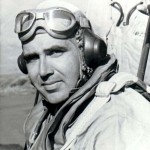
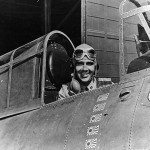 When a war begins, I doubt if anyone is thinking about the medals or the honors they might receive, because what they really want is for the war to be over already. Nobody enjoys going to war…not even the one who starts the war. There are never any guarantees that you will come out of a war alive, so most people would rather not go at all. Nevertheless, when a soldier goes into war, he or she has taken a vow to do their very best, and to fight to the death, if necessary. When World War II got started, the United States really intended to stay out of it. They vowed to stay neutral…until the Japanese attacked Pearl Harbor in Hawaii. Once the United States entered World War II, however, we were in it to win it.
When a war begins, I doubt if anyone is thinking about the medals or the honors they might receive, because what they really want is for the war to be over already. Nobody enjoys going to war…not even the one who starts the war. There are never any guarantees that you will come out of a war alive, so most people would rather not go at all. Nevertheless, when a soldier goes into war, he or she has taken a vow to do their very best, and to fight to the death, if necessary. When World War II got started, the United States really intended to stay out of it. They vowed to stay neutral…until the Japanese attacked Pearl Harbor in Hawaii. Once the United States entered World War II, however, we were in it to win it.
Lieutenant Edward O’Hare, an American naval aviator of the United States Navy, was born on March 13, 1914 in Saint Louis, Missouri, to Selma Anna (Lauth) and Edward Joseph O’Hare. He was of Irish and German descent. Edward, who was nicknamed “Butch,” had two sisters, Patricia and Marilyn. Their parents divorced in 1927. Butch and his sisters stayed with their mother in Saint Louis, and their father moved to Chicago. O’Hare joined the Navy, and from there, life moved pretty fast. On July 21, 1941, O’Hare met his future wife, Rita and asked her to marry him that night. He knew immediately that she was the one. They got married on September 6, 1941 and their daughter, Kathleen was born in January or February of 1943. O’Hare first met her when she was a month old, because of missions he was on.
In the Navy, O’Hare was stationed first on the USS Saratoga, then on the USS Enterprise, and then on the USS Lexington, flying a Grumman F4F-3 Wildcat. In mid-February 1942, the Lexington sailed into the Coral Sea. A town named Rabaul, at the very tip of New Britain, one of the islands that comprised the Bismarck Archipelago, had been invaded in January by the Japanese and transformed into a stronghold. In fact, it had been turned into one huge airbase. The occupation of Rabaul put the Japanese in prime striking position for the Solomon Islands, which would have been put them in a perfect position for expanding their ever-growing Pacific empire. Given the mission of destabilizing the Japanese position on Rabaul with a bombing raid, the fighters on the Lexington took off from the aircraft carrier’s deck in a raid against the Japanese position at Rabaul. Just moments later, Lieutenant O’Hare became America’s first World War II flying ace. In the battle that took place on February 20, 1942, O’Hare believed he had shot down six bombers and damaged a seventh. Captain Frederick C Sherman later reduced that number to five, as four of the reported nine bombers were still overhead when he pulled off. Nevertheless, in the opinion of Admiral Brown and of Captain Sherman, commanding the Lexington, Lieutenant O’Hare’s actions may have saved the carrier from serious damage or even loss. In a mere four minutes, O’Hare shot down five Japanese G4M1 Betty bombers, bringing a swift end to the Japanese attack and earning O’Hare the designation “Ace,” which was given to any pilot who had five or more downed enemy planes to his credit. The attack on the bombers was great, but it ruined the element of surprise, so the mission was called off.
On the night of November 26, 1943, the USS Enterprise introduced the experiment in the co-operative control of Avengers and Hellcats for night fighting. The team consisted of three planes, breaking up a large group of land-based bombers. O’Hare volunteered to lead this mission to conduct the first-ever Navy nighttime fighter 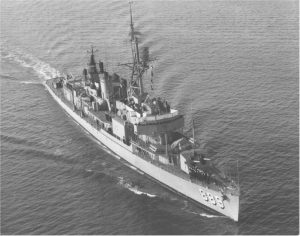
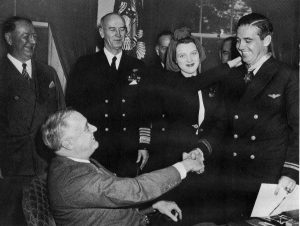 attack from an aircraft carrier to intercept a large force of enemy torpedo bombers. When the call came to man the fighters, Butch O’Hare was eating. He grabbed up part of his supper in his fist and started running for the ready room. It was to be his final mission. When it was over, O’Hare was missing in action. He was declared dead a year later. The airport in Chicago and a destroyer would later be named in his honor. He lived life fast and died young, but he was always in it to win it.
attack from an aircraft carrier to intercept a large force of enemy torpedo bombers. When the call came to man the fighters, Butch O’Hare was eating. He grabbed up part of his supper in his fist and started running for the ready room. It was to be his final mission. When it was over, O’Hare was missing in action. He was declared dead a year later. The airport in Chicago and a destroyer would later be named in his honor. He lived life fast and died young, but he was always in it to win it.

 It seems that no one is exempt from the effects of Covid-19. My grand nephew, Easton Moore is no exception. While he turned 16 a year ago, he didn’t get his driver’s license until July. Things just got put on hold. With the stay at home orders and such, having 50 daytime and 10 nighttime driving times. Then Easton just didn’t really let it bother him. Then, when he got a job at McDonald’s and found out that riding his bicycle to work all the time wasn’t so much fun. So, he made the decision, and before long he had his license.
It seems that no one is exempt from the effects of Covid-19. My grand nephew, Easton Moore is no exception. While he turned 16 a year ago, he didn’t get his driver’s license until July. Things just got put on hold. With the stay at home orders and such, having 50 daytime and 10 nighttime driving times. Then Easton just didn’t really let it bother him. Then, when he got a job at McDonald’s and found out that riding his bicycle to work all the time wasn’t so much fun. So, he made the decision, and before long he had his license.
Easton was at McDonald’s for about a month before he had  saved up enough money to buy a car from a friend. He very quickly began to enjoy having his car so he could really express himself. At “Red, White, and Blue Day,” Easton went out and bought a flag to show his patriotism. That is how many people feel about their car. It is an extension of themselves. It displays their personality and values. I’m proud of Easton’s patriotism, as I know his parents are too. These days, he is saving money to get a better car. That’s a good goal. Most kids start out with a “beater” to drive at first. A “beater” isn’t necessarily a “piece of junk” car, but rather just an older car that doesn’t need full coverage, because it’s not worth very much.
saved up enough money to buy a car from a friend. He very quickly began to enjoy having his car so he could really express himself. At “Red, White, and Blue Day,” Easton went out and bought a flag to show his patriotism. That is how many people feel about their car. It is an extension of themselves. It displays their personality and values. I’m proud of Easton’s patriotism, as I know his parents are too. These days, he is saving money to get a better car. That’s a good goal. Most kids start out with a “beater” to drive at first. A “beater” isn’t necessarily a “piece of junk” car, but rather just an older car that doesn’t need full coverage, because it’s not worth very much.
Easton is very good at “techy” things, which is common in his generation. Recently, some of the batteries on a few of the family phones needed to be replaced. Easton went on YouTube and quickly learned how to do that. The first one he replaced was his mom, my niece Machelle Moore’s; then came Easton’s phone; then his dad, Steve’s. First mine then his then his dads. It didn’t take him long to get real good at it. It took him ten minutes to replace the second battery on his mom’s phone, plus she needed a new ear piece and Easton was able to do that at the same time. Now, she can hear when someone calls…it’s a nice perk.


Easton comes from a tall family. His dad is 6’2″ tall; his dad’s brother is 6’8″ tall; and his grandpa, LJ Cook, Machelle’s dad, is 6’6″ tall. Easton really can’t wait to be taller than his dad. It’s a fun goal for him, and he has a real possibility of making that goal. Time will tell, of course, but Easton is already close to that goal, if he hasn’t passed it already, and since he will be growing for a few years yet, I have no doubt of his success. Today is Easton’s 17th birthday. Happy birthday Easton!! Have a great day!! We love you!!
 I realize that many people, me included, would have no desire to explore the inside of a volcano, but for scientists of volcanos…volcanologists, it is somehow important. A dormant volcano would be fairly easy to explore. There is less chance of getting caught in an eruption, but for one that isn’t dormant, it isn’t so easy. I don’t think I would want to try to explore Kilauea, because…well, it goes up all the time. Another very active volcano, Kavachi is not only active, but it is underwater. Kavachi is located in the south-west Pacific Ocean, south of Vangunu Island in the Solomon Islands. and is referred to locally as Rejo te Kavachi, meaning “Kavachi’s oven.” Kavachi has become active and then eroded back into the sea at least eight times since its first recorded eruption in 1939.
I realize that many people, me included, would have no desire to explore the inside of a volcano, but for scientists of volcanos…volcanologists, it is somehow important. A dormant volcano would be fairly easy to explore. There is less chance of getting caught in an eruption, but for one that isn’t dormant, it isn’t so easy. I don’t think I would want to try to explore Kilauea, because…well, it goes up all the time. Another very active volcano, Kavachi is not only active, but it is underwater. Kavachi is located in the south-west Pacific Ocean, south of Vangunu Island in the Solomon Islands. and is referred to locally as Rejo te Kavachi, meaning “Kavachi’s oven.” Kavachi has become active and then eroded back into the sea at least eight times since its first recorded eruption in 1939.
It is very strange to me to see pictures and videos of volcano erupting in the middle of the ocean. It seems so unnatural that fire and water could mix and the water not put out the fire. It’s a strange concept, but one that has baffled me for years. I think that the thought of fire and water has maybe been the curiosity behind the exploration of these underwater volcanoes. In May 2000, an international research team aboard the CSIRO 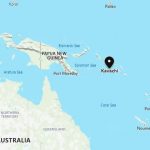 research vessel Franklin fixed the Kavachi volcano at 8° 59.65’S, 157° 58.23’E. The vent of the volcano was below sea level, but frequent eruptions ejected molten lava up to 230 feet above sea level, and sulfurous steam plumes up to 1,600 feet. The team mapped a roughly conical feature rising from 3,600 feet water depth, with the volcano having a basal diameter of about 5.0 miles. Of course, underwater volcanoes were the foundation of the Hawaiian Islands, so it is not a odd idea that when the Kavachi volcano erupted in 2003, a 49-foot island formed above the surface. The small island disappeared a short time later, so I suppose the volcano would have to erupt almost constantly in order to form an island that would last.
research vessel Franklin fixed the Kavachi volcano at 8° 59.65’S, 157° 58.23’E. The vent of the volcano was below sea level, but frequent eruptions ejected molten lava up to 230 feet above sea level, and sulfurous steam plumes up to 1,600 feet. The team mapped a roughly conical feature rising from 3,600 feet water depth, with the volcano having a basal diameter of about 5.0 miles. Of course, underwater volcanoes were the foundation of the Hawaiian Islands, so it is not a odd idea that when the Kavachi volcano erupted in 2003, a 49-foot island formed above the surface. The small island disappeared a short time later, so I suppose the volcano would have to erupt almost constantly in order to form an island that would last.
Of course, that strangest thing about Kavachi is that while the volcano is quite active, it has another strange anomaly to it. In 2015, marine life has been found living inside the Kavachi crater, including two species of sharks and a sixgill stingray. It seems so strange that they could live in an environment that must be quite acidic. The scientists haven’t been able to go in and explore yet, because of the possibility of an eruption.  Finally they took a chance and dropped a camera into the volcano. Concerned about activity from the volcano, the expedition members only left the camera in the hot, acidic water around the volcano for about an hour. Still, it was all they needed to find the wildlife inside. Of course, during an eruption, there is no way this marine life could live inside the volcano. That makes me wonder if they somehow know the eruption is coming so they can get out, or do they simply die when an eruption occurs. That somehow doesn’t seem like the case, because eventually there would be no more marine life in the volcano. I guess that is just a question we will probably never have an answer to.
Finally they took a chance and dropped a camera into the volcano. Concerned about activity from the volcano, the expedition members only left the camera in the hot, acidic water around the volcano for about an hour. Still, it was all they needed to find the wildlife inside. Of course, during an eruption, there is no way this marine life could live inside the volcano. That makes me wonder if they somehow know the eruption is coming so they can get out, or do they simply die when an eruption occurs. That somehow doesn’t seem like the case, because eventually there would be no more marine life in the volcano. I guess that is just a question we will probably never have an answer to.
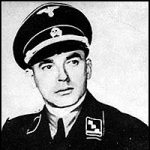
 When we think of the weapons of warfare, we think of guns, planes, tanks, and such, but there are weapons of warfare that while seemingly far less lethal, are still deadly…in other ways. Economic warfare is something I would never have considered, even though it makes perfect sense. The Germans in World War II thought of every possible weapon, or very close to it. If a nation has no money to bankroll a war, they are very likely going to lose. That was the position that Germany wanted to put Great Britain in during World War II. They decided on an age-old plan…if you’re a criminal that is. Counterfeiting money to tank the economy.
When we think of the weapons of warfare, we think of guns, planes, tanks, and such, but there are weapons of warfare that while seemingly far less lethal, are still deadly…in other ways. Economic warfare is something I would never have considered, even though it makes perfect sense. The Germans in World War II thought of every possible weapon, or very close to it. If a nation has no money to bankroll a war, they are very likely going to lose. That was the position that Germany wanted to put Great Britain in during World War II. They decided on an age-old plan…if you’re a criminal that is. Counterfeiting money to tank the economy.
The year was 1942 and for the purpose of artificially causing inflation of the British pound, leading to the economic collapse of the competition, while simultaneously funding some of their own projects, the production of the British “White Notes” was about to start. It would not start in Britain, however. These “White Notes” would be made behind the gates of Sachsenhausen concentration camp. The Germans decided to begin counterfeiting British banknotes. These tactics were considered particularly wrong by the German soldiers themselves, basically sneaky and unprofessional. However, soon after World War II, it became common practice for different countries to counterfeit the currency of their opposition in times of war. Evil knows no bounds.
The first attempt at counterfeiting, known as Operation Andrew, failed because of disagreements between top brass inside of the Nazi Party. Friederich Walter Bernhard Krueger was placed in charge of Germany’s second attempt at counterfeiting British notes. The second operation’s codename was Bernhard because that is what Krueger was called. In preparation for the production, Bernhard assembled a team of about 140 men/prisoners. Some historians have suggested that it was as many as 300. These men were told they would receive better treatment and special perks like radio, newspapers, warm barracks, if they participated in the operation. The men had nothing to lose. All they had to do was counterfeit 400,000 British banknotes a month.
After a year of hard work, and the prisoners finally successfully counterfeited the British White Note. By 1945, conservative estimates figure 70,000,000 notes were printed by the inmates. It was a cache worth upwards of £100,000,000. In order to complete this herculean task, the team of counterfeiters studied vast quantities of authentic White Notes. They broke this massive task up into seven smaller tasks, each one seemingly more difficult than the last. “These tasks included: Discovering secret security marks, Engraving the vignette, Perfecting the paper, Creating identical ink, Solving the serial numbering system, Re-creating the signatures, dates and places of origin, and Printing the notes. The men found no fewer than 150 different security marks hidden on the White Notes. There were intentional minor defects and flaws that the Bank of England incorporated as anti-counterfeiting devices. To make things even harder, these security devices were different for each denomination. Nonetheless, in short order, the counterfeit team produced a plate for each denomination: £5, £10 £20 and £50.” The plan was coming together and soon they were ready to execute it.
The plan was to fly over and drop the counterfeit money from the planes. Once it was laundered and in the hands of the people, they could spend it and because there was no real backing for the money, the economy would tank. The operation went on for a time, but with the late February and early March 1945 advance of the Allied armies, all production of notes at Sachsenhausen ceased. The equipment and supplies were packed and transported, with the prisoners, to the Mauthausen-Gusen concentration camp in Austria, arriving on 12 March. 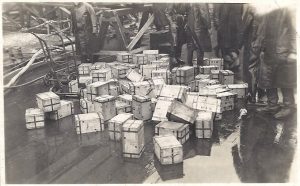
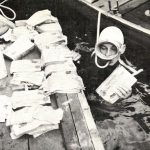 They had to hide the evidence. They didn’t give up on the process, however. Shortly afterwards Krüger arranged a transfer of the equipment to the Redl-Zipf series of tunnels so production could be restarted. The order to resume production was soon rescinded, however, and the prisoners were ordered to destroy the cases of money they had with them. The equipment and any money not burned was loaded onto trucks and sunk in the Toplitz and Grundlsee lakes.
They had to hide the evidence. They didn’t give up on the process, however. Shortly afterwards Krüger arranged a transfer of the equipment to the Redl-Zipf series of tunnels so production could be restarted. The order to resume production was soon rescinded, however, and the prisoners were ordered to destroy the cases of money they had with them. The equipment and any money not burned was loaded onto trucks and sunk in the Toplitz and Grundlsee lakes.

